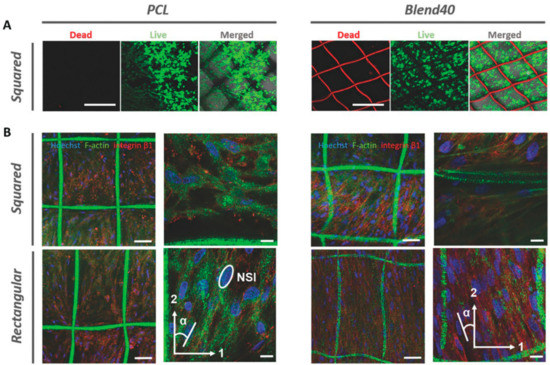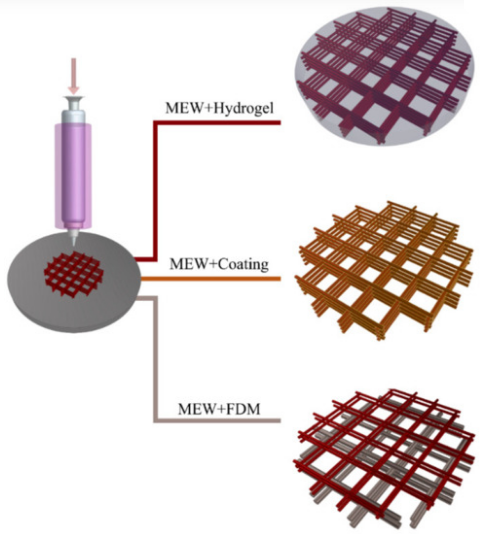Tissue Engineering in Turkey: Focus Turns to Melt Electrospinning & Hybrid Manufacturing
Turkish researchers from Sabanci University are taking tissue engineering a step further with new techniques for creating scaffolds, outlining their work in the recently published ‘Biomimicry in Bio-Manufacturing: Developments in Melt Electrospinning Writing Technology Towards Hybrid Biomanufacturing.’
Electrospinning methods are used often (by researchers especially), offering benefits like simplicity in design, affordability, and flexibility for combining polymers and refining mechanical properties. Solution electrospinning (SE) is popular, employing a syringe and nozzle, syringe pump, high voltage supplier, and a collector. There are challenges with SE historically, however, leaving researchers to overcome issues like solvent toxicity, along with problems in the evaporation rate. Other obstacles have included problems with solubility, instability in flow, and more.
“In addition, the fabrication of an aligned 3D structure with large dimensions is still a challenge due to the accumulation of residual electrical charges in the deposited filaments,” stated the researchers.
Melt electrospinning (ME) is environmentally friendly and does not require solvents—meaning that no effort or preparation must be delegated to creating proper ventilation or ultimately, removal. This saves time, money, and eliminates safety concerns centered around toxicity.
“In addition, some polymers that cannot be dissolved in any solvent can be processed by ME. It also provides the opportunity of using multimaterials at once that either is not possible to find a common solvent, or it will cause difficulties for electrospinning,” stated the researchers. “Similar to SE, the polymer jet is subjected to pulling (electrostatic Columbic and gravitational) and resistive (surface tension and viscoelastic) forces at spinneret tip. However, the polymer melt with much higher viscosity and lower conductivity lead to more stable jet during the deposition, which makes it easier to obtain a controlled-shape filament.”

Schematic representation of solution electrospinning (left), and melt electrospinning writing (right).
Offering promise for building scaffolds, melt electrospinning writing (MEW) allows flexibility in adjustment for size, shape, porosity, and more in bioprinting exercises. There are of course challenges and complexities in MEW also, to include temperature and conductivity issues, as well as correct placement of the insular shield for preventing electric interference. Other areas to overcome include fabrication of structures for handling increases in the tip-to-collector distance, as well as dealing with temperature and charge issues related to the syringe and nozzle, resulting in viscosity levels and electrical force.

The effect of collector speed (A) on final structure at constant pressure, and (B) on fiber diameter at different air pressures [72] Copyright 2018 by Wiley-VCH Verlag GmbH & Co. KGaA Weinheim. Reprinted by permission of John Wiley and Sons.
- Skin
- Endosteum
- Nerve
- Cardiac tissue
Numerous polymers have been used in tissue engineering with ME, to include:
- Polycaprolactone (PCL)
- Polylactic acid (PLA)
- Poly-l-lactic acid (PLLA)
- Poly (ethylene glycol) (PEG)
- Polyurethane (PU)
- Polymethyl methacrylate (PMMA)
- Polypropylene (PP)
Ongoing challenges with MEW continue to center around balancing processing issues, creating material with suitable mechanical properties, and ensuring biocompatibility. The researchers state that MEW offers promise also when used with ‘other established fabrication technologies’ that could override current limitations and expand its uses.
“By the aid of a hybrid method, one can fabricate hierarchical structures in order to satisfy cellular and mechanical demand and fulfill the requirements for tissue engineering constructs, while other application criteria, such as mechanical durability and/or processing challenges of specific materials, could be addressed,” stated the researchers.
Hydrogels offer great promise too, as they can imitate the extracellular matrix found in human tissue. To create hybrid hydrogel-MEW composites, fibers must be constructed by MEW processes, with infiltrated hydrogels.
The team also experimented with creating a ‘mimic calcified zone,’ using PCL fibers and hydroxyapatite nanoparticles (nHA). MEW is also promising for creating cardiac tissue with suitable mechanical strength, along with engineering neural, skin, and bone tissue—as well as assisting in wound healing applications.

General modeling overview for continuum and micro-finite element (FE) models. (A) Uniaxial compression test for the investigation of the reinforcement mechanism of the composite. (B) Continuum FE model on a quarter of an idealized composite architecture (C) Schematic µ-CT representation of the micro-FE model for the real composite architecture at different deformation levels. (From reference [111], reprinted with permission from Springer Nature).

(A) Viability and (B) morphology of cardiac progenitor cells (CPCs) in collagen hydrogel infiltrated in squared and rectangular bare-PCL and blended-PCL scaffolds [84] Copyright 2017 by Wiley-VCH Verlag GmbH & Co. KGaA Weinheim. Reprinted by permission of John Wiley and Sons.
“By further development of materials and architectures, we foresee extensive progress in hybrid systems to utilize a wide variety of polymers and hydrogels with several biomolecules, cells, and nanoparticles,” conclude the researchers.
“More comprehensive experimental and numerical modeling studies are needed to better understand the mechanical properties and optimize the properties of hybrid MEW structures. Although elastic modulus and Poisson’s ratio of the components of the hybrid structure would be considered as the main parameters for the modeling studies, other biomechanical features of the components and the mutual interactions of the components should be taken into account to improve the accuracy of modeling.”
Tissue engineering has become a vast science, and the use of hydrogels continues to expand also, from bioprinting with chitosan-gelatin hydrogels to testing conductivity in granular hydrogels to experimenting with graphene oxide and more.
What do you think of this news? Let us know your thoughts! Join the discussion of this and other 3D printing topics at 3DPrintBoard.com.
[Source / Images: ‘Biomimicry in Bio-Manufacturing: Developments in Melt Electrospinning Writing Technology Towards Hybrid Biomanufacturing’]Subscribe to Our Email Newsletter
Stay up-to-date on all the latest news from the 3D printing industry and receive information and offers from third party vendors.
Print Services
You May Also Like
New Business: Temporary, Migratory, & Modular 3D Printed Architecture
If we look at potentially emerging 3D printing businesses, then architecture has not been fully explored. Yes, there is a lot of house 3D printing going on worldwide. From deployable...
3D Printing News Briefs, April 19, 2025: Material Extrusion Standard, Metal Powder, & More
In today’s 3D Printing News Briefs, we’re covering a proposed standard for material extrusion, before moving on to business and metal powder. We’ll end with a commercial store’s robotic 3D...
Japan Unveils World’s First 3D Printed Train Station
Japan is now home to what we believe is the world’s first train station built with 3D printing technology. Located in Arida City, just south of Osaka, the new Hatsushima...
restor3d Raises $38M to Expand 3D Printed Orthopedic Implants
Backed by $38 million in new funding, restor3d is pushing ahead with the launch of four personalized implant lines, set to roll out in 2025 and 2026. This latest venture...


























